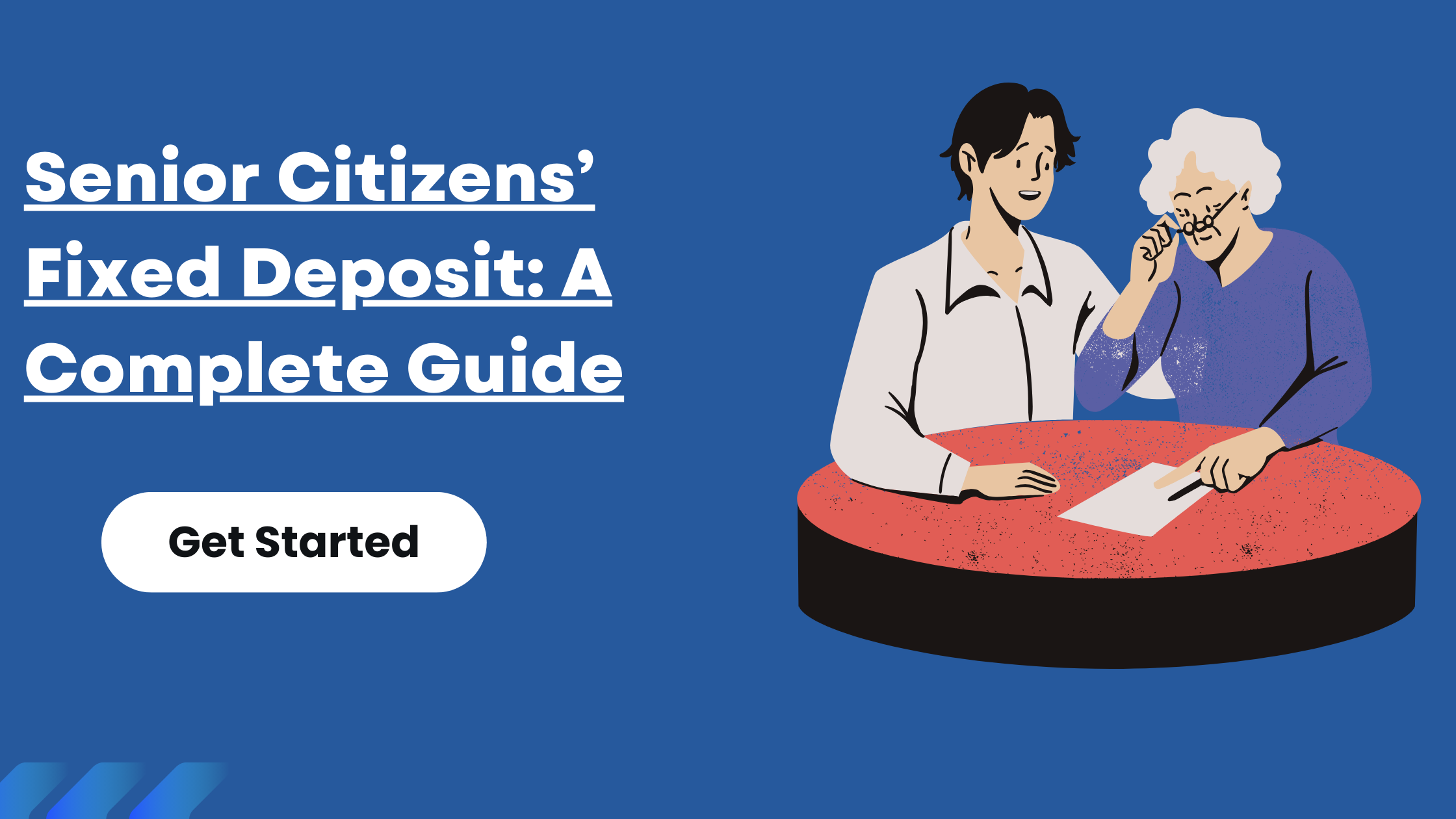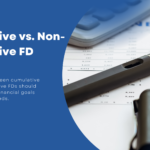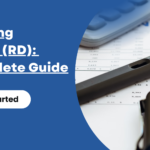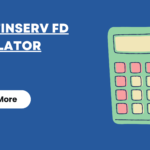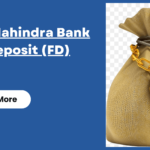A Senior Citizens’ Fixed Deposit is a type of fixed deposit account specifically designed for individuals aged 60 years and above. It offers higher interest rates than regular fixed deposits, making it a popular investment option for retirees looking to earn stable returns with minimal risk. Senior citizens often rely on fixed deposits to generate a steady income, especially after retirement, as they provide guaranteed returns and safety of capital.
Key Features of Senior Citizens’ Fixed Deposit:
- Higher Interest Rates:
Senior citizens enjoy a higher interest rate compared to regular fixed deposits. The additional rate is typically 0.25% to 0.75% more than the standard FD rates offered to non-senior citizens, ensuring better returns. - Guaranteed Returns:
Like regular FDs, the interest rate in a Senior Citizens’ FD is fixed at the time of opening the account and remains unchanged throughout the tenure. This ensures predictable and guaranteed returns. - Flexible Tenure Options:
Senior Citizens’ FDs offer flexible tenure options, ranging from a few months to 10 years, allowing seniors to choose a duration that best suits their financial needs. - Interest Payout Options:
Senior citizens can choose how they wish to receive the interest payments. They can opt for monthly, quarterly, half-yearly, or annual payouts, or choose to receive the interest along with the principal at maturity. - Safety of Capital:
Fixed deposits are one of the safest investment options as they are not linked to the market, providing security of the invested capital. - Premature Withdrawal:
Senior Citizens’ FDs allow for premature withdrawal, although a penalty may apply. However, certain banks offer waivers or reduced penalties for senior citizens. - Loan Facility:
Senior citizens can avail of loans against their FD. Generally, banks offer up to 90% of the deposit amount as a loan, providing liquidity without breaking the FD.
Interest Rates on Senior Citizens’ Fixed Deposits:
The interest rates on Senior Citizens’ Fixed Deposits are generally higher than regular FDs, offering an additional 0.25% to 0.75%. The rates vary from bank to bank, but here’s an approximate range:
| Tenure | Interest Rate (Senior Citizens) |
|---|---|
| 1 Year | 6.5% – 7.0% |
| 3 Years | 7.0% – 7.5% |
| 5 Years | 7.5% – 8.0% |
Advantages of Senior Citizens’ Fixed Deposits:
- Higher Returns:
Senior citizens benefit from higher interest rates, which provide better returns compared to regular FDs. This helps them generate a steady source of income post-retirement. - Safe and Secure:
FDs are not subject to market risks, making them a secure investment option for risk-averse individuals, especially retirees who cannot afford to lose their capital. - Flexible Interest Payouts:
Senior citizens can opt for regular interest payouts (monthly or quarterly) to supplement their income or receive a lump sum at maturity, depending on their financial needs. - Liquidity Through Loans:
If needed, senior citizens can take a loan against their FD without breaking the deposit, ensuring liquidity in times of emergency. - Tax-Saving Option:
Some banks offer tax-saving FDs specifically for senior citizens, where they can claim deductions under Section 80C of the Income Tax Act.
Disadvantages of Senior Citizens’ Fixed Deposits:
- Tax on Interest Earned:
The interest earned on Senior Citizens’ FDs is fully taxable, and banks may deduct TDS (Tax Deducted at Source) if the interest earned exceeds ₹50,000 in a financial year. - Inflation Risk:
While FDs offer fixed returns, they may not always keep pace with inflation, which could erode the real value of the returns over time. - Premature Withdrawal Penalty:
If a senior citizen needs to withdraw the FD before maturity, a penalty may apply, which could reduce the overall returns.
Tax Implications of Senior Citizens’ Fixed Deposits:
- Tax Deducted at Source (TDS):
Interest earned on Senior Citizens’ FDs is subject to TDS if it exceeds ₹50,000 in a financial year. However, senior citizens can submit Form 15H to avoid TDS if their total income is below the taxable limit. - Tax-Saving FD:
Some banks offer tax-saving FDs for senior citizens, where they can invest up to ₹1.5 lakh under Section 80C of the Income Tax Act. These FDs have a lock-in period of 5 years and offer the same benefits as regular tax-saving FDs.
How to Open a Senior Citizens’ Fixed Deposit:
- Visit the Bank:
Senior citizens can visit their bank branch or use online banking to open an FD account. - Choose the Deposit Amount:
Decide the amount to be deposited. Most banks have a minimum deposit requirement, usually around ₹1,000 to ₹10,000. - Select the Tenure:
Choose the tenure of the FD, ranging from a few months to up to 10 years. - Choose the Interest Payout Option:
Depending on your financial needs, select whether you want regular interest payouts (monthly/quarterly) or a lump sum payout at maturity. - Submit Necessary Documents:
Senior citizens need to provide age proof (such as a PAN card or Aadhaar card) and KYC documents to open the FD account.
Conclusion:
A Senior Citizens’ Fixed Deposit is a great option for retirees who want to earn higher returns with minimal risk. With attractive interest rates, guaranteed returns, and flexible interest payout options, these FDs provide financial security and a steady income stream for senior citizens. However, it’s important to consider the tax implications and the potential inflation risk before investing.
